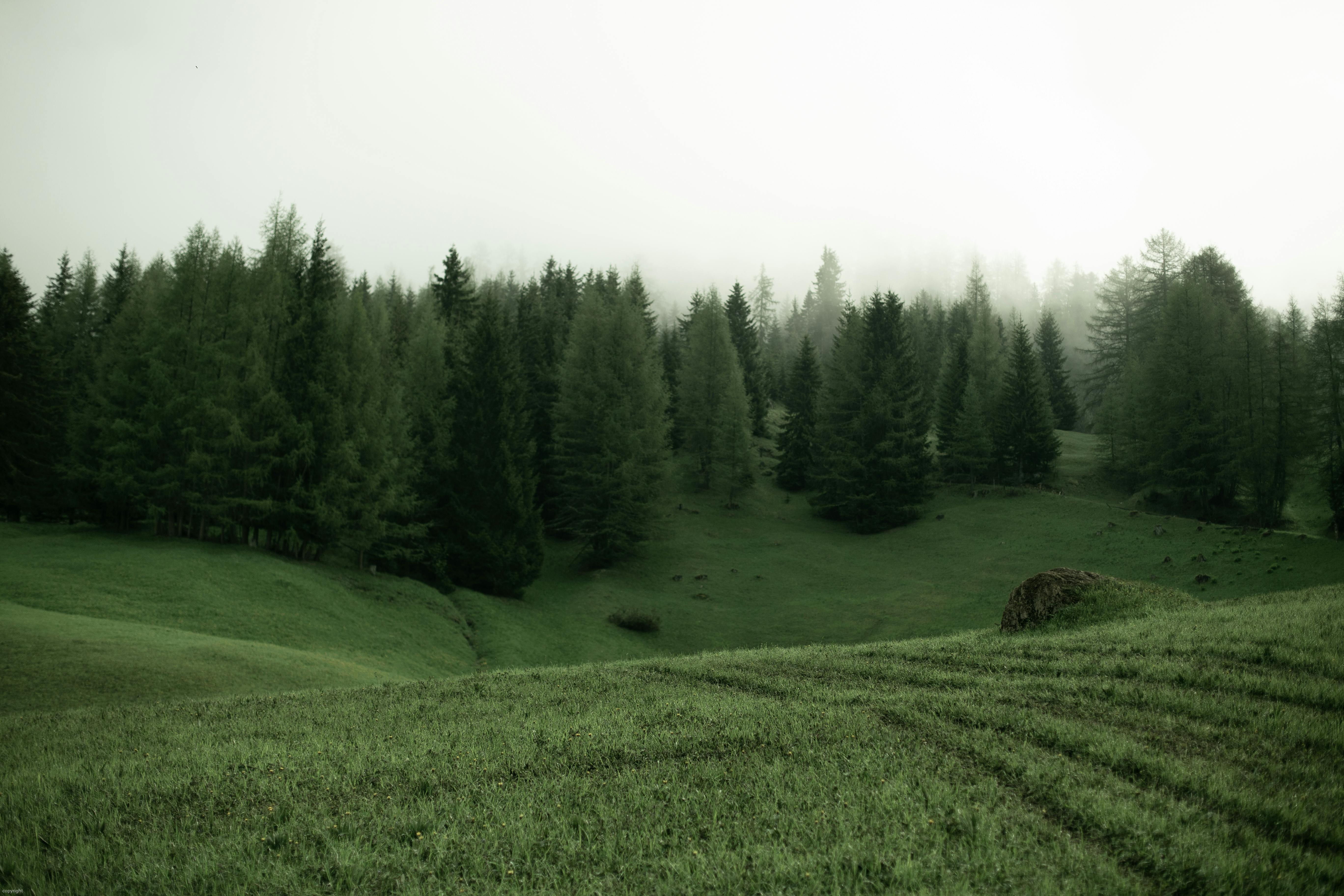Planting Norway Spruce
Norway spruce is an attractive, evergreen conifer tree that can provide years of beauty and shade to your landscape. When planting Norway spruce, take care to plan for adequate space for the mature size of the tree and select a location with well-draining soil. With proper care, Norway spruce make a beautiful addition to any landscape. Here’s how to plant a Norway Spruce:
1. Choose a planting site with full sun exposure and well-draining soil.
2. Dig a hole twice as wide as the root ball of the Norway spruce tree.
3. Place the tree in the center of the hole and fill it with soil, lightly tamping it down around the root ball as you fill in the hole.
4. Water thoroughly until water drains from the bottom of the planting hole and then add more soil if necessary to ensure that your tree is planted at its original soil level.
Once planted, water your Norway spruce regularly during dry periods throughout its first year of growth. Fertilize your tree once a year using a balanced fertilizer formula such as 10-10-10 or 16-16-16 at half strength (follow label instructions). Prune your Norway spruce every spring if you wish to maintain its shape and size or remove any broken branches.
By following these simple steps, you can successfully plant and care for a beautiful Norway spruce that will last for years to come!
How Far Apart Should You Space Norway Spruce?
Spacing Norway spruce correctly is an important factor in their growth and development. Generally, it is recommended to space the trees between 5 and 10 feet apart, depending on the size of the tree, the intended purpose of planting them, and other factors. When planting a hedge or screen with Norway spruce trees, it is best to plant them closer together. For instance, if you wanted to create a living privacy wall with these trees, you should place them 3-4 feet apart.
When planting a single specimen or multiple specimens of Norway spruce in a landscape setting, it is recommended to space them 6-10 feet apart. This will allow adequate room for each tree to grow and thrive without overcrowding one another. If you are planting multiple rows of Norway spruce as a windbreak or privacy screen, then spacing them 4-5 feet apart in each row is ideal.
It is also important to remember that Norway spruce do not tolerate competition from other trees or plants. If you are planting these trees near other plants or trees, be sure to leave ample room so that they do not compete for light and nutrients from the soil. Additionally, if you are planting multiple rows of these trees for a windbreak or privacy screen, make sure that each row has enough space between to allow air circulation and prevent disease.
In summary, when planting Norway spruce consider your purpose for doing so as well as the environment they will be planted in. Spacing should be between 5 and 10 feet apart for single specimens in landscape settings and 3-4 feet apart when creating a hedge or privacy screen with multiple rows of trees. Also remember that these trees do not tolerate competition from other plants or trees so be sure to leave ample room when placing them near other vegetation.
Pruning Techniques For Norway Spruce
Pruning is an important practice when it comes to maintaining the health and aesthetic of Norway Spruce. Pruning helps remove dead or diseased branches, as well as allowing more light to reach the inner branches and promoting air circulation. Pruning should only be done when the tree is dormant, which is usually from late fall to early spring.
The most common type of pruning for Norway Spruce is called thinning. Thinning involves removing some of the interior branches that are overcrowding the tree, allowing for light and air to reach the remaining branches. The goal of thinning should be to open up the canopy so that light can reach all parts of the tree, while still preserving a natural shape.
Another type of pruning that can be beneficial for Norway Spruce is crown reduction or lifting. This involves reducing the height or spread of a branch by removing part of it, usually near its base. This should only be done if there is a need to reduce weight or size, such as when there are low-hanging branches that interfere with walking or vehicle traffic underneath.
It’s also important to remove any damaged or broken branches if they are present on your Norway Spruce. These can be removed at any time during the year, but it’s best to do so when they are first noticed in order to prevent further damage or disease from spreading throughout the tree.
Finally, annual pruning may also be beneficial for Norway Spruce trees that have reached their desired size and shape. This involves removing small amounts of growth each year in order to maintain a healthy canopy and avoid overcrowding within the branches.
In conclusion, pruning techniques such as thinning, crown reduction/lifting, removal of damaged/broken branches, and annual pruning will help promote healthy growth and a beautiful aesthetic in your Norway Spruce trees.

How To Care For The Soil Around Norway Spruce
Norway spruce is a popular conifer tree that adds beauty and structure to your landscape. Proper care of the soil around Norway spruce includes regular fertilization, mulching, and amending with organic matter. When planted in well-draining soil, most of these tasks can be completed every two to three years. The following steps will help you care for the soil around Norway spruce and keep it healthy and thriving.
Fertilize
Fertilizing your Norway spruce is an essential part of keeping it healthy and vigorous. A slow-release fertilizer or one with a low nitrogen content should be used. The best time to fertilize is in late spring or early summer when growth is most active. Follow manufacturer’s directions for application rates and frequency.
Mulch
Mulching around the base of your Norway spruce helps keep weeds at bay, retain moisture in the soil, reduce erosion, and improve drainage. It also helps protect the tree’s roots from extreme temperatures. Organic mulches such as shredded bark or wood chips are best for this purpose as they breakdown over time adding valuable nutrients to the soil. Spread a 2-4 inch layer of mulch around the base of the tree but avoid piling it up against the trunk as this encourages rot and disease.
Amend With Organic Matter
Organic matter such as compost or aged manure can be added to provide valuable nutrients to the soil around your Norway spruce. Spread a 2-4 inch layer of organic matter over the surface of the soil each year and work it into the top 6-8 inches with a garden fork or shovel before planting or after you have finished pruning your tree.
By following these simple steps you can ensure that your Norway spruce has all the necessary nutrients it needs to thrive in your landscape. Regular care of its soil will help keep it healthy for many years to come!
What To Do If Norway Spruce Start Dying
If you notice your Norway spruce trees starting to die, it is important to take action quickly. The first step is to diagnose the problem and determine the cause. Common causes of Norway spruce death include pests, diseases, environmental stress, and nutrient deficiencies. Once the cause of death has been identified, you can take the appropriate steps to address it.
For example, if pests are causing the death of your Norway spruces, you will need to treat them with pesticides or other methods of pest control. If diseases are causing the death of your Norway spruces, you may need to apply fungicides or other forms of disease control. If environmental stress is causing the death of your Norway spruces, you will need to address any environmental conditions that may be contributing to their decline.
Finally, if nutrient deficiencies are causing the death of your Norway spruces, you will need to ensure that they are receiving adequate amounts of nutrients through proper fertilization and soil management. It is also important to ensure that they have adequate drainage and air circulation in order for them to thrive.
Once you have taken steps to address the cause of death for your Norway spruces, it is important to monitor their health closely over time and take additional steps as needed in order to keep them healthy and thriving.
Provide Adequate Sunlight
Norway spruce trees need plenty of sunlight to thrive, so it’s important to plant them in an area that receives at least 6 hours of direct sunlight per day. If your Norway spruce tree is planted in a shaded area, it may become weak and prone to disease. You may also consider pruning the branches to ensure that the tree is receiving adequate sunlight.
Keep the Soil Moist
Norway spruces require moist soil conditions, so it’s important to water your tree regularly. Aim to keep the soil moist but not soaked – too much water can cause root rot and other problems. During hot summer months, you may need to water your Norway spruce more frequently. It’s especially important to water your tree during periods of drought or extreme heat.
Add Mulch
Adding mulch around the base of your Norway spruce tree can help keep the soil moist and protect against weeds and other pests. Use a natural mulch such as straw or wood chips, and apply a layer that is 2-4 inches thick. Be sure not to pile up mulch against the trunk of the tree – this can lead to rot or fungal diseases.
Fertilize Regularly
Fertilizing your Norway spruce regularly will help ensure that it has all the nutrients it needs for healthy growth. Choose a fertilizer specifically formulated for coniferous trees, and apply it according to product instructions. Aim to fertilize at least once per year – in early spring – for best results.
Prune Carefully
Pruning is an important part of keeping your Norway spruce healthy and looking its best. When pruning, make sure you use sharp pruning shears and avoid damaging branches or bark. Aim to remove dead or diseased branches as soon as possible, as well as any branches that are crossing one another or rubbing against each other.

Conclusion
Planting Norway spruce for privacy is a great way to add a natural and attractive barrier to your property. The evergreen foliage will provide year-round cover, and the mature trees can also be used as windbreaks. Norway spruces require little maintenance and are easy to plant. By following the steps outlined in this article, you’ll be able to quickly and easily create an effective privacy screen for your property.
When planting Norway spruce, it’s important to choose an appropriate site with plenty of sunlight. Dig a hole that is twice as wide and just as deep as the root system of the tree. Make sure to mix in organic matter into the soil surrounding the roots, and water regularly during the first few years after planting. With proper care, your Norway spruce will thrive and become a beautiful addition to your landscape.

